Paving Comparison: Indian Sandstone
Of the many options available for paving, my personal favourite is Indian Sandstone. Currently it is by far the most popular paving chosen by our clients – in fact I like it so much I chose it for the patio in my garden (in the ‘Mint’ finish) – see colours below.
What does it look like?
Style
As a natural stone, Indian Sandstone is a hard wearing paving product. With its subtle blend of colours, Indian Sandstone compliments most planting schemes. This is the case whether it is laid in a more traditional garden or a garden with a more minimal contemporary theme; the choice available in colour means that you are sure to find one that suits your garden. In a more traditional garden in Reading for example, we laid Indian Sandstone in the Modak Rose colour and this suited perfectly the age of the property and the cottage garden feel of the planting.
Surface Finish
Sandstone comes in a number of different surface finishes:
- Riven: Hand cut finish, with a rustic riven surface (generally the cheapest option, as this is how it comes out of the quarry)
- Sawn: Often sawn on all six sides & either honed or sandblasted to give a contemporary look (generally the most expensive, as it involves the most processing)
- Tumbled: Processed for a softer finish, with rounded edges and corners – for a vintage, time worn appearance.
Colours
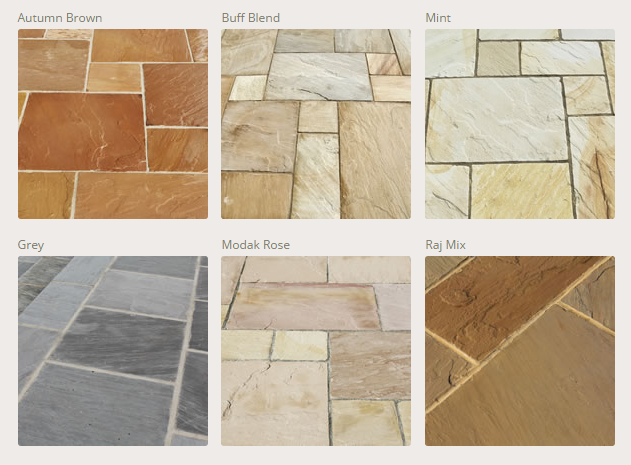
Indian Sandstone comes in a range of mainly subtle colours. Our preferred supplier Nigel Belcher offers a range of six colours (for traditional riven sandstone) – Autumn Brown, Buff Blend, Mint, Grey, Modak Rose and Raj Mix. Other suppliers may use different names.
Sawn and Tumbled Indian Sandstone are available in similar colours.
Slip Resistance
One of the many benefits of sandstone is that it’s not slippery – even a sawn sandstone patio when wet has good slip resistance.
Maintenance
The main downside to Indian Sandstone is that algae may build up over the years, particularly on a north facing patio which gets little sunlight. Algae can be prevented by using a sealant such as Drytreat which has a 10 to 15 year guarantee. (ALDA Landscapes is officially registered to administer this product by the company Drytreat).
Cost
Indian Sandstone is the most economical of the natural stones, especially in the hand cut finish, having a reasonable cost compared to upmarket concrete products and limestone / slate. As noted above, Tumbled and Sawn Indian Sandstones are more expensive, as they involve more processing.
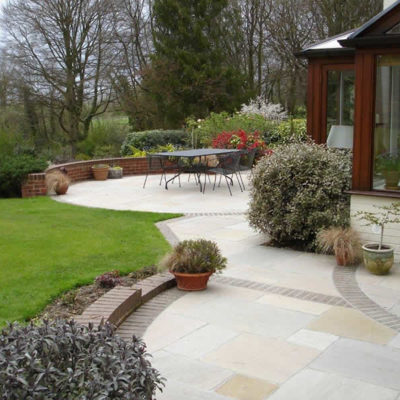
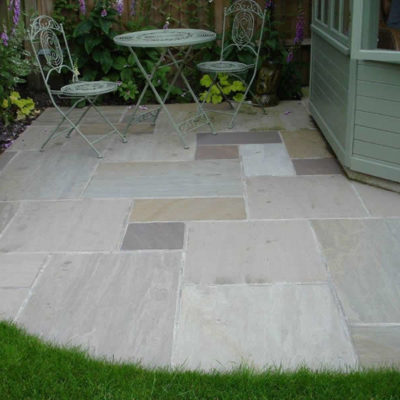
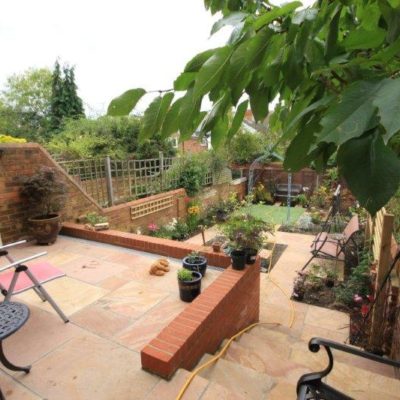
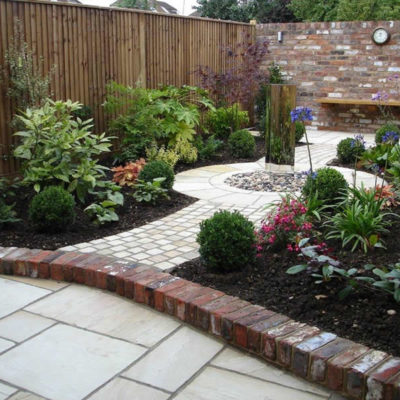
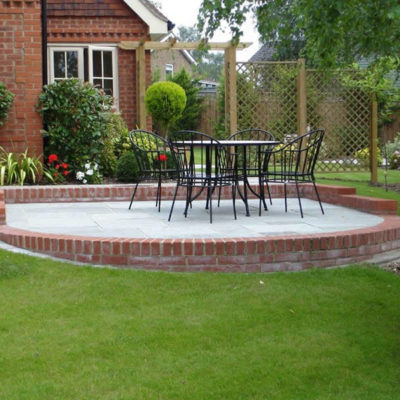
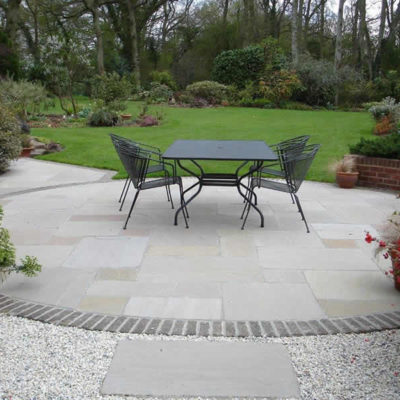
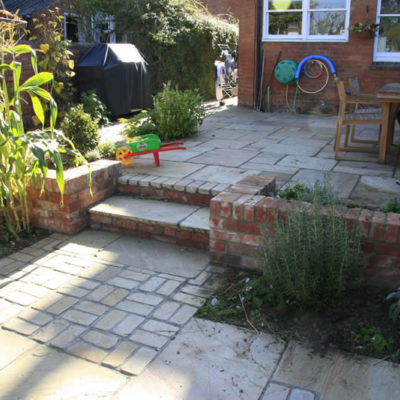
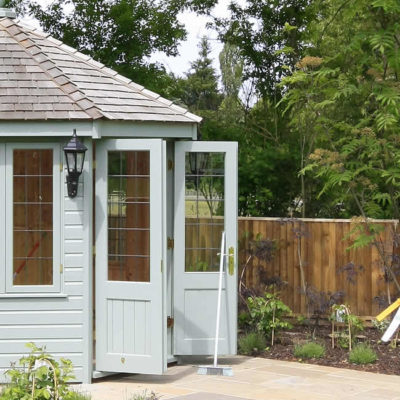
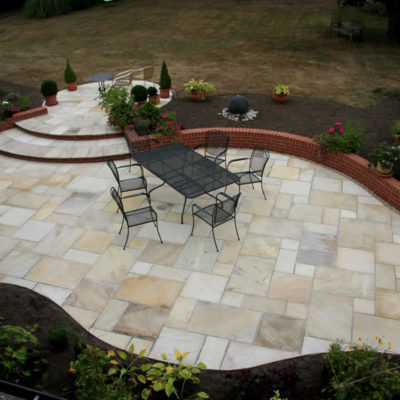
Hello
We are looking at getting a patio built using Indian sandstone. My husband and l are in disagreement regarding the colour. He likes York Green and l like Grey. So we have compromised by choosing Mint. My worry is that someone who works at a builders merchant told me that the Mint ‘weathers’ the worse compared to all the other colours. Is this true?
Hi Hardeep, thanks for your comment. Mint sandstone has proved to be very prone to black algae dots, which are difficult to remove without using a specialist cleaner (e.g. Black Spot Remover). So if you do end up using Mint sandstone, we would advise that you have the paving sealed, which would make removing the algae easier. I hope that helps.